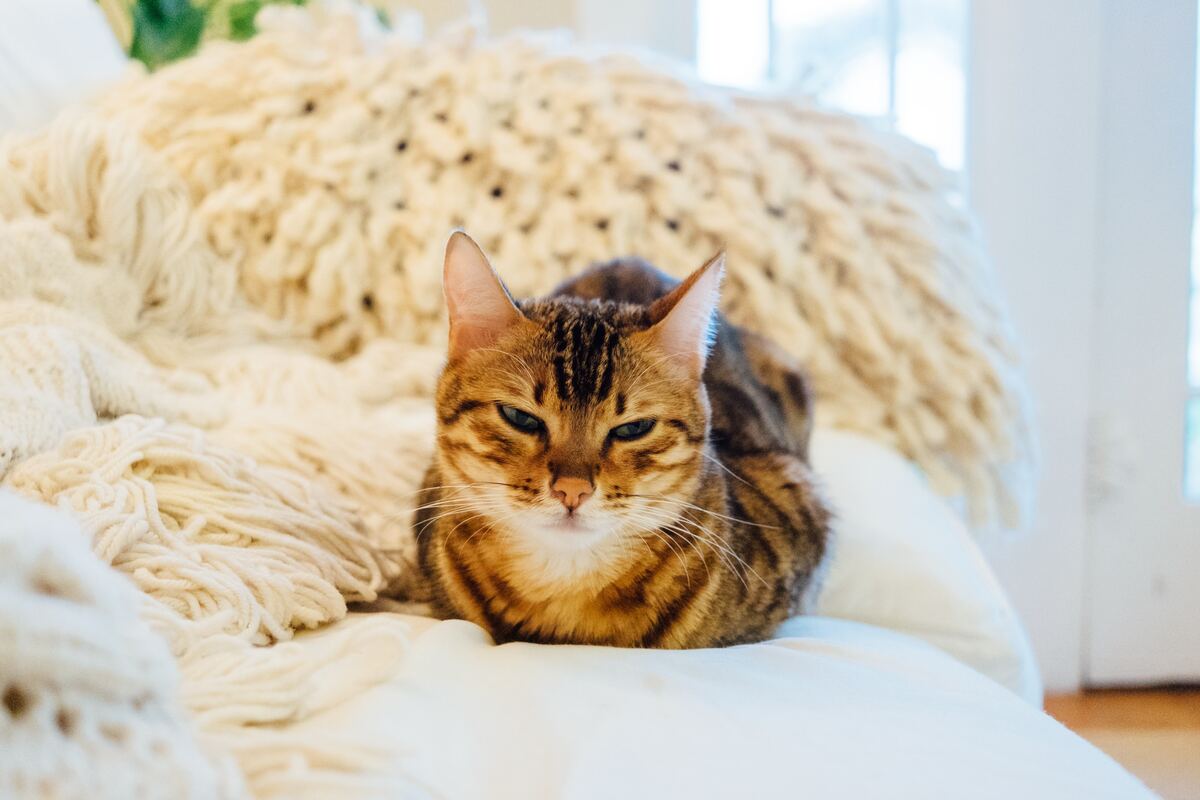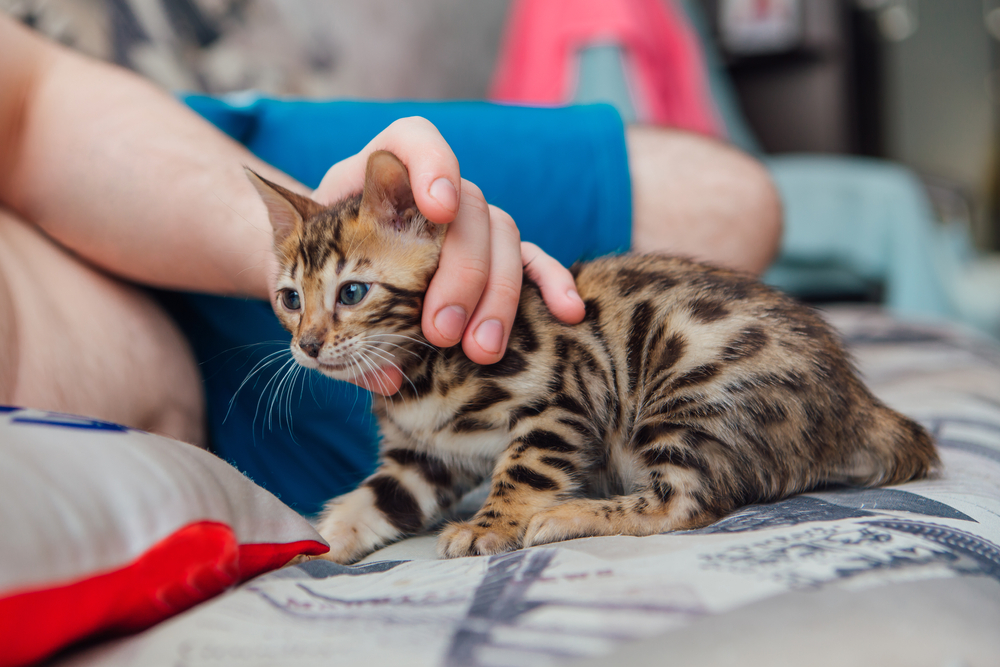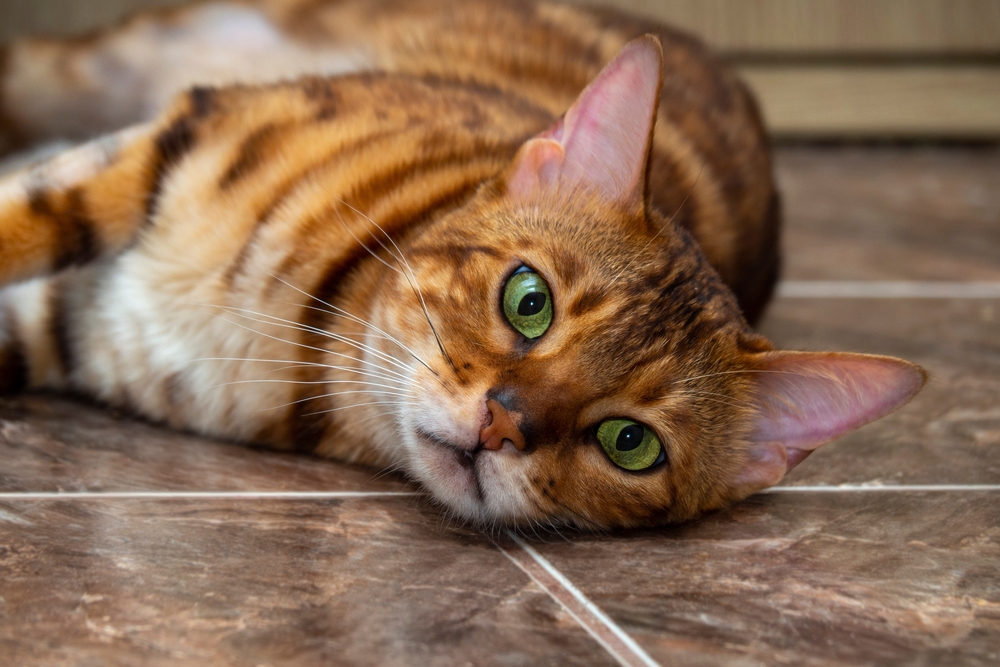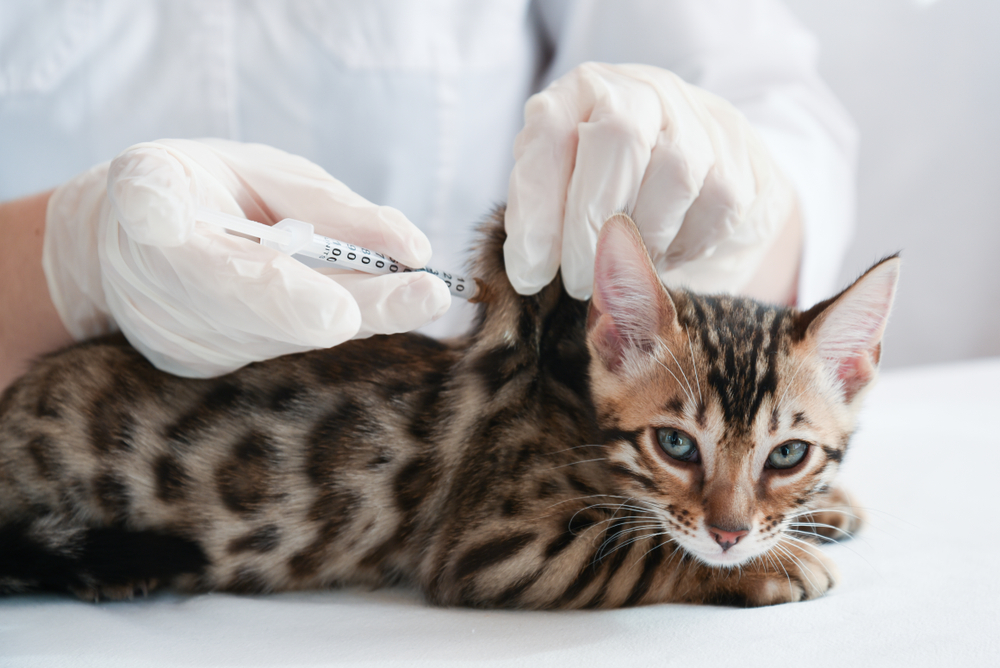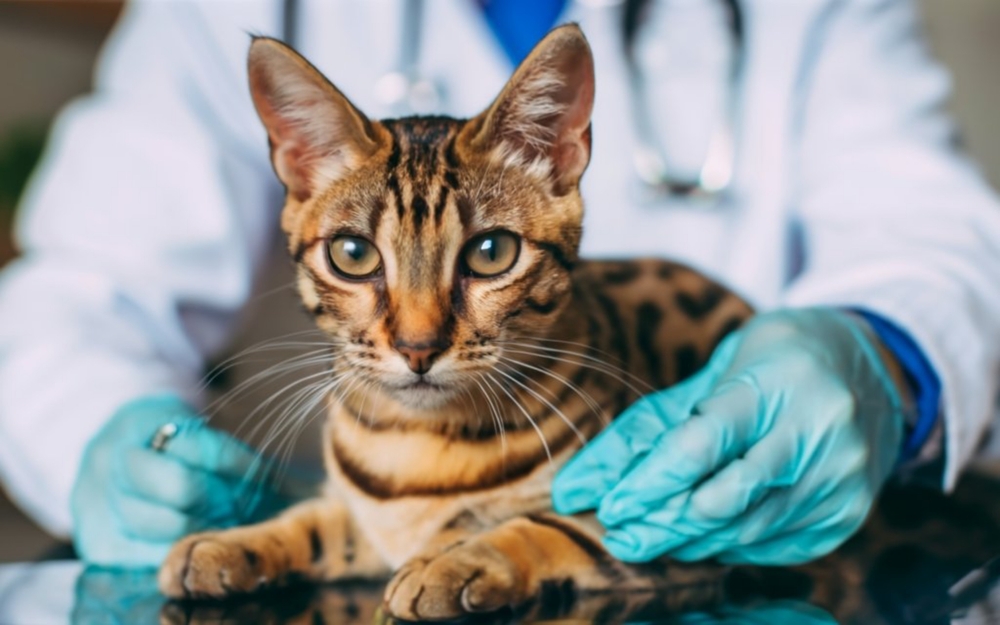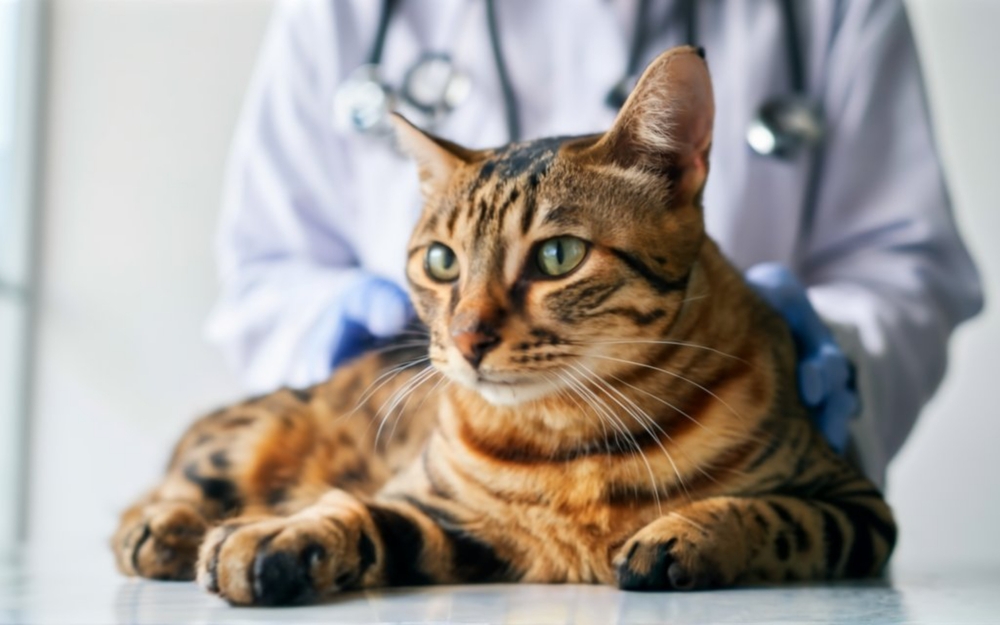📖 Table of Content:
When you bring home a Bengal cat, you might think that you’re dealing with a wild cat. A cross between the Asian leopard and the Egyptian Mau, Bengal cats are the closest you can get to owning a wild cat without breaking the law. What are the most common Bengal cat health problems, though?
We need to start by saying that Bengal cats are generally considered healthy. Whether you’re a pet parent to a Bengal kitten or a grown Bengal cat with a career and a mortgage, you’ll probably notice that these curious creatures are highly athletic and active and are always on the move.
When we’re talking about Bengal cat health problems, we’re not talking about something that’s 100% going to happen to your Liliputian leopard. Bengal cats can have a happy and healthy life with a healthy diet, regular exercise, and veterinarian checkups. However, they are prone to certain medical conditions.
Cats can suffer from hereditary and lifestyle-related diseases, but they’re all manageable with proper care, attention, and affection. Whether your Bengal beast ends up suffering from something simple like teeth-related problems or a serious condition like progressive retinal atrophy, don’t get scared.
We’re bringing you everything you need to know about common Bengal health problems to ensure you have all the deets to care for your little rascal. We’ve got your back.
Caring for a Bengal cat
What do you need to know about Bengal cats before you start freaking over the possibility of your rosette-patterned kitty suffering from a health problem of some sort? Bengal cats are one of the most popular, prominent breeds for a reason – they’re big, bold, and beautiful.
With rosette-patterned coats, lean, muscular builds, and unpredictable temperaments, Bengal cats are born to draw attention and turn heads. Whether you’re planning on adopting a Bengal cat or you’re already running around your apartment after one, you probably already know how addicting they are.
We might say that Bengal cats are a little high-maintenance, but that’s not something you need to worry about. More often than not, Bengal cats require a delicious, nutritious diet that provides them with animal protein and fat, regular exercise that gets them moving and grooving, and regular vet checkups.
Caring for a Bengal cat means doing your research and figuring out a way to cater to your cat’s needs without doing too much or too little. Contrary to popular belief, not all cats are lap cats and that’s what makes Bengals different from others. Bengal cats require physical activity to survive and thrive.
When you make sure to provide your Bengal beast with everything we mentioned beforehand, you’re guaranteed to see her have a happy and healthy life. Bengal cats are known to reach the ripe age between 12 and 18, but you can extend that considerably with proper care and a healthy diet.
Common Bengal cat health problems
With that out of the way, though, we do need to underline that Bengal cats are prone to certain medical conditions. While they’re generally considered a healthy breed, Bengal cats are known to suffer from eye, kidney, and dental diseases. What are common Bengal cat health problems to keep an eye on?
1. Progressive retinal atrophy
Progressive retinal atrophy (PRA) refers to a genetic disease that causes progressive degeneration of the cat’s retina. What does that mean? Cats born with the degenerative gene aren’t born blind, but they’re likely to go blind gradually.
When they’re little, they might show signs of night blindness or struggle to see certain things. Within two or four years after the first symptoms appear, they’re likely to go completely blind.
Unfortunately, there’s no cure for PRA. Unlike some of the other conditions we’re going to talk about, cats suffering from PRA can have a happy and healthy life with a few tweaks and changes.
2. Patellar luxation
Patellar luxation affects Bengal cats that are highly active and athletic – a.k.a. all Bengal cats. Patellar luxation refers to a condition that occurs when a Bengal cat’s kneecaps fall out of place due to badly developed knees.
A luxating patella typically gets diagnosed using a grading system, with varying degrees representing the severity of the condition. When Bengal cats suffer from patellar luxation, they typically showcase symptoms of limping, difficulty walking and avoiding the use of a particular leg.
Mild to moderate cases can be treated with medication, but most Bengal cats suffering from patellar luxation end up getting surgery.
3. Hip dysplasia
Bengal cats are also prone to hip dysplasia, an inherited condition that occurs when the cat’s hips form abnormally, making the ball and socket misaligned and loose. Over time, wear and tear on the hip can cause osteoarthritis, making walking, hopping on the highest shelves, and playing difficult and painful.
Some of the most common signs of hip dysplasia are avoiding physical activity, limping, depression, expression of pain when you touch your cat’s hip, and licking or chewing on the hip area. Hip dysplasia can be successfully treated, although you do need to catch the early symptoms on time.
4. Pyruvate kinase deficiency
Now, pyruvate kinase deficiency (PKD) refers to an inherited red blood cell enzyme disorder that causes chronic hemolytic anemia. Worry not, we don’t expect you to know these terms by heart or to understand everything related to them. What matters is that you understand that PKD can be dangerous to cats.
Bengal cats are prone to PKD and you might notice your Bengal beast showcasing signs of lethargy, weakness, abdominal enlargement, yellow eyes, and weight loss.
But you do need to be wary of the fact that certain types of PKD go untreated because they’re difficult to spot – that’s why you need genetic testing and regular vet checkups.
5. Hypertrophic cardiomyopathy
Hypertrophic cardiomyopathy happens to be one of the most common heart conditions among all cats, but Bengal cats are especially prone to getting diagnosed with HCM. When a Bengal cat gets older, she’s more likely to experience signs of HCM and suffer from the condition.
HCM refers to a heart condition that causes the thickening of the heart muscle and makes the heart work harder to pump enough blood into the bloodstream. HCM can cause blood clots, pulmonary edema, limb paralysis, heart failure, and sudden death, too, and that’s why you need to prioritize vet checkups.
6. Anesthetic allergy
Although rarely, Bengal cats can also suffer from all sorts of allergies. What stands out the most seems to be the anesthetic allergy which, as you might have guessed, occurs when the cat is highly sensitive to anesthetics.
When your cat needs surgery or needs anesthetics for whatever other reason, your vet needs to be extremely careful when performing the procedure to ensure they don’t react to the drug.
Whenever you go to the vet, make sure you voice your concerns and let the doctor know that you suspect your cat might be allergic to anesthetics. Anesthetic allergy can cause anaphylactic shock and cardiac arrest.
7. Lymphoma
All cats risk developing cancer, but Bengal cats are more susceptible to developing lymphoma than other breeds. Lymphoma refers to a type of cancer that affects the lymphatic system, from the lymph nodes, ducts, spleen, and bone marrow to the thymus and parts of the gastrointestinal tract.
Bengal cats are typically more prone to intestinal lymphoma than any other type of lymphoma.
At the end of the day, lymphoma can be treated successfully depending on your cat’s overall health, as well as the current stage of the lymphoma. Reduce your cat’s risk of developing lymphoma by keeping up with her vaccinations and keeping her inside to avoid environmental risk factors.
8. Gastrointestinal conditions
In addition to the increased risk of intestinal lymphoma, Bengal cats are prone to gastrointestinal conditionals and overall GI upsets. It might be because Bengal cats are prone to roaming around, exploring the great outdoors, and nibbling on things they’re not supposed to nibble on.
IBS might be the one to blame, too. Bengal cats are more likely to suffer from IBS than some of the other breeds that struggle with GI upsets. If you notice signs of vomiting, diarrhea, or a change in appetite, you might want to contact your vet to ensure that your Bengal cat isn’t suffering from a GI disease.
9. Dental disease
A common Bengal cat health problem, dental disease, affects other cats, too. Cats aren’t above grooming themselves and taking care of their needs, but they’re not adamant about cleaning their teeth. Contrary to popular belief, Bengal cats aren’t accustomed to a toothbrush and toothpaste.
Without your help, your Bengal beast might end up developing dental disease. Some of the most common signs of dental disease are redness, swelling, bleeding along the gingiva at the base of the teeth, and a reluctance or unwillingness to eat. So, you might want to contact your vet right there and then.
10. Cataracts
We can’t forget about cataracts, either. All cats can suffer from cataracts, but research suggests that Bengal cats are more likely to develop them than some of the other breeds. Cataracts refer to a condition where the eye’s lens becomes clouded or opaque.
Bengal cats are already prone to eye problems and we’re not surprised that they’re prone to cataracts, too. Cataracts can be successfully treated with surgery.
